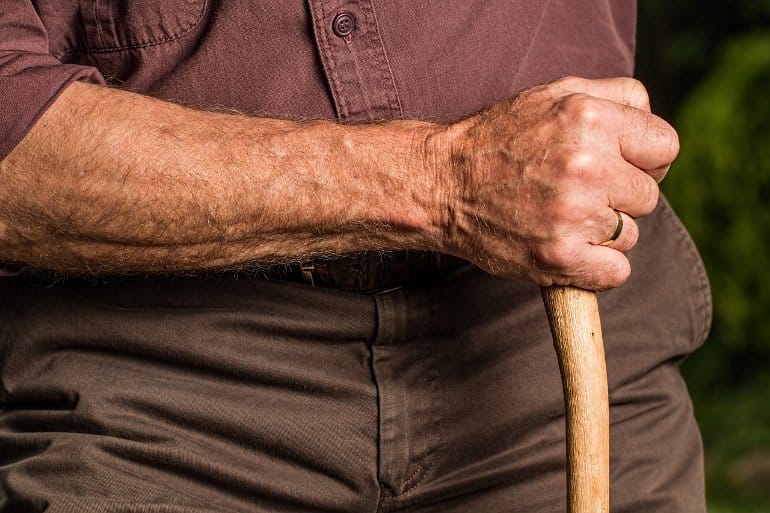Summary: Researchers have identified a “sweet spot” during exercise that appears to reverse age-related cognitive decline and improves learning in mouse models.
Source: University of Queensland
University of Queensland researchers have discovered an exercise ‘sweet spot’ that reverses the cognitive decline in aging mice, paving the way for human studies.
After more than a decade of research, led by Queensland Brain Institute (QBI) Emeritus Professor Perry Bartlett and Dr. Dan Blackmore, the team found 35 days of voluntary physical exercise improved learning and memory.
“We tested the cognitive ability of elderly mice following defined periods of exercise and found an optimal period or ‘sweet spot’ that greatly improved their spatial learning,” Dr. Blackmore said.
The researchers also discovered how exercise improved learning.

“We found that growth hormone (GH) levels peaked during this time, and we’ve been able to demonstrate that artificially raising GH in sedentary mice also was also effective in improving their cognitive skills,” Dr. Blackmore said
“We discovered GH stimulates the production of new neurons in the hippocampus—the region of the brain critically important to learning and memory.
“This is an important discovery for the thousands of Australians diagnosed with dementia every year.”
Dementia is the second leading cause of death of all Australians, and with no medical breakthrough the number of people with dementia is expected to increase to around 1.1 million by 2058.
Professor Bartlett said the findings provide further proof that loss of cognitive function in old age is directly related to the diminished production of new neurons.
“It underlines the importance of being able to activate the neurogenic stem cells in the brain that we first identified 20 years ago,” Professor Bartlett said.
The team were able to explore how the production of new neurons changed the circuitry in the brain using Magnetic Resonance Imaging (MRI).
“Using MRI, we were able to study the brain following exercise, and for the first time identify the critical changes in the structure and functional circuitry of the hippocampus required for improved spatial learning,” Dr. Blackmore said.
About this exercise and cognition research news
Author: Press Office
Source: University of Queensland
Contact: Press Office – University of Queensland
Image: The image is in the public domain
Original Research: Open access.
“An exercise “sweet spot” reverses cognitive deficits of aging by growth-hormone-induced neurogenesis” by Daniel G. Blackmore et al. iScience
Open access.
“Neurogenic-dependent changes in hippocampal circuitry underlie the procognitive effect of exercise in aging mice” by Xiaoqing Alice Zhou et al. iScience
Abstract
An exercise “sweet spot” reverses cognitive deficits of aging by growth-hormone-induced neurogenesis
Hippocampal function is critical for spatial and contextual learning, and its decline with age contributes to cognitive impairment. Exercise can improve hippocampal function, however, the amount of exercise and mechanisms mediating improvement remain largely unknown.
Here, we show exercise reverses learning deficits in aged (24 months) female mice but only when it occurs for a specific duration, with longer or shorter periods proving ineffective.
A spike in the levels of growth hormone (GH) and a corresponding increase in neurogenesis during this sweet spot mediate this effect because blocking GH receptor with a competitive antagonist or depleting newborn neurons abrogates the exercise-induced cognitive improvement.
Moreover, raising GH levels with GH-releasing hormone agonist improved cognition in nonrunners. We show that GH stimulates neural precursors directly, indicating the link between raised GH and neurogenesis is the basis for the substantially improved learning in aged animals.
Abstract
Neurogenic-dependent changes in hippocampal circuitry underlie the procognitive effect of exercise in aging mice
We have shown that the improvement in hippocampal-based learning in aged mice following physical exercise observed is dependent on neurogenesis in the dentate gyrus (DG) and is regulated by changes in growth hormone levels.
The changes in neurocircuitry, however, which may underlie this improvement, remain unclear. Using in vivo multimodal magnetic resonance imaging to track changes in aged mice exposed to exercise, we show the improved spatial learning is due to enhanced DG connectivity, particularly the strengthening of the DG-Cornu Ammonis 3 and the DG-medial entorhinal cortex connections in the dorsal hippocampus. Moreover, we provide evidence that these changes in circuitry are dependent on neurogenesis since they were abrogated by ablation of newborn neurons following exercise.
These findings identify the specific changes in hippocampal circuitry that underlie the cognitive improvements resulting from physical activity and show that they are dependent on the activation of neurogenesis in aged animals.






